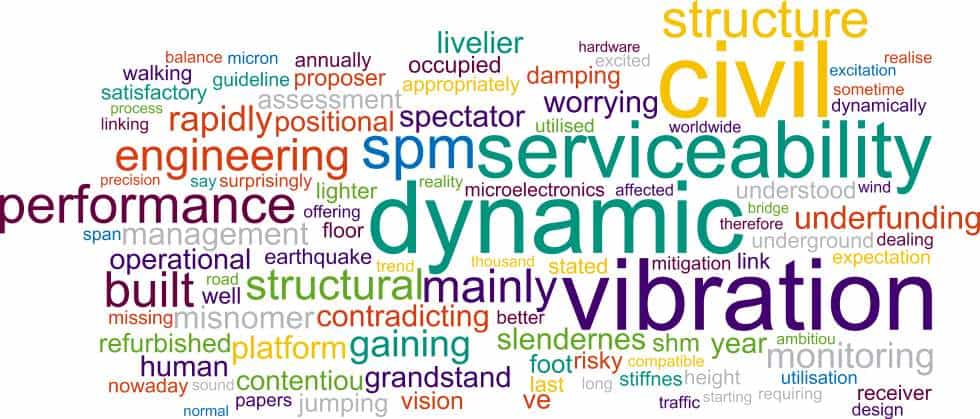Karadeniz Teknik Üniversitesi İnşaat Mühendisliği Bölümü MESLEKİ İNGİLİZCE I Ders notları.
Hazırlayanlar:
Prof. Dr. Ömer YÜKSEK
Yrd. Doç. Dr. Murat KANKAL
Yrd. Doç. Dr. Adem BAYRAM
KTÜ İNŞAAT MÜHENDİSLİĞİ BÖLÜMÜ
- ENGINEERING AS PROFESSION
1.1. Introduction
Engineers apply the principles of science and mathematics to develop economical solutions to technical problems. Their work is the link between scientific discoveries and the commercial applications that meet societal and consumer needs. Many engineers develop new products. During this process, they consider several factors. For example, in developing an industrial robot, engineers precisely specify the functional requirements; design and test the robot’s components; integrate the components to produce the final design; and evaluate the design’s overall effectiveness, cost, reliability, and safety. This process applies to the development of many different products, such as chemicals, computers, power plants, helicopters, and toys.
In addition to design and development; many engineers work in testing, production, or maintenance. These engineers supervise production in factories, determine the causes of component failure, and test manufactured products to maintain quality. They also estimate the time and cost to complete projects. Supervisory engineers are responsible for major components or entire projects.
Engineers use computers extensively to produce and analyze designs; to simulate and test how a machine, structure, or system operates; to generate specifications for parts; and to monitor product quality and control process efficiency. Nanotechnology, which involves the creation of high-performance materials and components by integrating atoms and molecules, also is introducing entirely new principles to the design process.
1.2. Types of Engineering
Most engineers specialize. Following are details on the 17 engineering specialties covered in the Federal Government’s Standard Occupational Classification (SOC) system. Numerous other specialties are recognized by professional societies, and each of the major branches of engineering has numerous subdivisions. Civil engineering, for example, includes structural and transportation engineering, and materials engineering includes ceramic, metallurgical, and polymer engineering. Engineers also may specialize in one industry, such as motor vehicles, or in one type of technology, such as turbines or semiconductor materials.
Aerospace Engineers design, develop, and test aircraft, spacecraft, and missiles and supervise the manufacture of these products.
Agricultural Engineers apply knowledge of engineering technology and science to agriculture and the efficient use of biological resources.
Biomedical Engineers develop devices and procedures that solve medical and health-related problems by combining their knowledge of biology and medicine with engineering principles and practices.
Chemical Engineers apply the principles of chemistry to solve problems involving the production or use of chemicals and biochemical.
Civil Engineers design and supervise the construction of roads, buildings, airports, tunnels, dams, bridges, and water supply and sewage systems. They must consider many factors in the design process, from the construction costs and expected lifetime of a project to government regulations and potential environmental hazards such as earthquakes and hurricanes. Civil engineering, considered one of the oldest engineering disciplines, encompasses many specialties. The major ones are structural, water resources, construction, environmental, transportation, and geotechnical engineering. Many civil engineers hold supervisory or administrative positions, from supervisor of a construction site to city engineer. Others may work in design, construction, research, and teaching.
Computer Hardware Engineers research, design, develops, test, and oversee the manufacture and installation of computer hardware.
Electrical Engineers design, develop, test, and supervise the manufacture of electrical equipment.
Electronics Engineers (except computer), are responsible for a wide range of technologies, from portable music players to the global positioning system (GPS), which can continuously provide the location, for example, of a vehicle.
Environmental Engineers develop solutions to environmental problems using the principles of biology and chemistry. They are involved in water and air pollution control, recycling, waste disposal, and public health issues. Environmental engineers conduct hazardous-waste management studies in which they evaluate the significance of the hazard, advice on treatment and containment, and develop regulations to prevent mishaps. They design municipal water supply and industrial wastewater treatment systems.
Health and Safety Engineers (except mining safety engineers and inspectors) prevent harm to people and property by applying knowledge of systems engineering and mechanical, chemical and human performance principles.
Industrial Engineers determine the most effective ways to use the basic factors of production—people, machines, materials, information, and energy—to make a product or provide a service.
Marine Engineers and Naval Architects are involved in the design, construction, and maintenance of ships, boats, and related equipment. They design and supervise the construction of everything from aircraft carriers to submarines, and from sailboats to tankers.
Materials Engineers are involved in the development, processing, and testing of the materials used to create a range of products, from computer chips and aircraft wings to golf clubs and snow skis. They work with metals, ceramics, plastics, semiconductors, and composites to create new materials that meet certain mechanical, electrical, and chemical requirements.
Mechanical Engineers research, design, develops, manufacture, and test tools, engines, machines, and other mechanical devices. Mechanical engineering is one of the broadest engineering disciplines. Engineers in this discipline work on power-producing machines such as electric generators, internal combustion engines, and steam and gas turbines.
Mining and Geological Engineers, Including Mining Safety Engineers find, extract, and prepare coal, metals, and minerals for use by manufacturing industries and utilities. They design open-pit and underground mines, supervise the construction of mine shafts and tunnels in underground operations, and devise methods for transporting minerals to processing plants.
Nuclear Engineers research and develop the processes, instruments, and systems used to derive benefits from nuclear energy and radiation. They design, develop, monitor, and operate nuclear plants to generate power.
Petroleum Engineers search the world for reservoirs containing oil or natural gas. Once these resources are discovered, petroleum engineers work with geologists and other specialists to understand the geologic formation and properties of the rock containing the reservoir, determine the drilling methods to be used, and monitor drilling and production operations. They design equipment and processes to achieve the maximum profitable recovery of oil and gas
1.3 Work Environment
Most engineers work in office buildings, laboratories, or industrial plants. Others may spend time outdoors at construction sites and oil and gas exploration and production sites, where they monitor or direct operations or solve onsite problems. Some engineers travel extensively to plants or worksites here and abroad.
Many engineers work a standard 40-hour week. At times, deadlines or design standards may bring extra pressure to a job, requiring engineers to work longer hours.
2. CIVIL ENGINEERING
Civil engineering is a professional engineering discipline that deals with the design and construction of the physical and natural built environment, including works such as bridges, roads, canals, dams and buildings. Civil engineering is the oldest engineering discipline after military engineering, and it was defined to distinguish it from military engineering. It is traditionally broken into several sub-disciplines including environmental engineering, geotechnical engineering, structural engineering, transportation engineering, water resources engineering, materials engineering, coastal engineering, surveying, urban planning, and construction engineering.
1.1. History
Engineering has been an aspect of life since the beginnings of human existence. Civil engineering might be considered properly commencing between 4000 and 2000 BC in Ancient Egypt and Mesopotamia when humans started to abandon a nomadic existence, thus causing a need for the construction of shelter. During this time, transportation became increasingly important leading to the development of the wheel and sailing. The construction of Pyramids in Egypt (circa 2700-2500 BC) might be considered the first instances of large structure constructions.
In ancient times, engineers were typically referred to as architects or master builders. In the 18th century, the term civil engineering was first used to recognize it as a separate field from military engineering. The first self-proclaimed civil engineer was John Smeaton who constructed the Eddystone Lighthouse.
1.2. Sub-Disciplines
In general, civil engineering is concerned with the overall interface of human created fixed projects with the greater world. General civil engineers work closely with surveyors and specialized civil engineers to fit and serve fixed projects within their given site, community and terrain by designing grading, drainage, pavement, water supply, sewer service, electric and communications supply, and land divisions. General engineers spend much of their time visiting project sites, developing community consensus, and preparing construction plans. General civil engineering is also referred to as site engineering; a branch of civil engineering that primarily focuses on converting a tract of land from one usage to another. Civil engineers typically apply the principles of geotechnical engineering, structural engineering, environmental engineering, transportation engineering and construction engineering to residential, commercial, industrial and public works projects of all sizes and levels of construction.
1.2.1. Construction and Structural Engineering
Construction engineering involves planning and execution of the designs from transportation, site development, hydraulic, environmental, structural and geotechnical engineers. As construction firms tend to have higher business risk than other types of civil engineering firms, many construction engineers tend to take on a role that is more business-like in nature: drafting and reviewing contracts, evaluating logistical operations, and closely-monitoring prices of necessary supplies.
Structural engineering is concerned with the structural design and structural analysis of buildings, bridges, and other structures. This involves calculating the stresses and forces that act upon or arise within a structure, and designing the structure to successfully resist those forces and stresses. Resistance to wind and seismic loadings, especially performance near resonant frequencies, which affect the overall stability of a structure, are major design concerns. Other factors such as durability and cost are also considered. In addition to design of new buildings, structural engineers may design a seismic retrofit for an existing structure to mitigate undesirable performance during earthquakes.
1.2.2. Hydraulic Engineering
Hydraulic engineering is concerned with the flow and conveyance of fluids, principally water. This area of civil engineering is intimately related to the design of pipelines, water distribution systems, drainage facilities (including bridges, dams, channels, culverts, levees, storm sewers), and canals. Hydraulic engineers design these facilities using the concepts of fluid pressure, fluid statics, fluid dynamics, and hydraulics, among others. Water resources engineering is concerned with the collection and management of water (as a natural resource). As a discipline it therefore combines hydrology, environmental science, meteorology, geology, conservation, and resource management. This area of civil engineering relates to the prediction and management of both the quality and the quantity of water in both underground (aquifers) and above ground (lakes, rivers, and streams) resources. Water resource engineers analyze and model very small to very large areas of the earth to predict the amount and content of water as it flows into, through, or out of a facility. Although the actual design of the facility may be left to other engineers.
1.2.3. Environmental Engineering
Environmental engineering deals with the treatment of chemical, biological, and/or thermal waste, the purification of water and air, and the remediation of contaminated sites, due to prior waste disposal or accidental contamination. Among the topics covered by environmental engineering are pollutant transport, water purification, sewage treatment, and hazardous waste management. Environmental engineers can be involved with pollution reduction, green engineering, and industrial ecology. Environmental engineering also deals with the gathering of information on the environmental consequences of proposed actions and the assessment of effects of proposed actions for the purpose of assisting society and policy makers in the decision making process.
Environmental engineering is the contemporary term for sanitary engineering, though sanitary engineering traditionally had not included much of the hazardous waste management and environmental remediation work covered by the term environmental engineering. Some other terms in use are public health engineering and environmental health engineering.
1.2.4. Geotechnical Engineering
Geotechnical engineering is an area of civil engineering concerned with the rock and soil that civil engineering systems are supported by. Knowledge from the fields of geology, material science and testing, mechanics, and hydraulics are applied by geotechnical engineers to safely and economically design foundations, retaining walls, and similar structures. Environmental concerns in relation to groundwater and waste disposal have spawned a new area of study called geoenvironmental engineering where biology and chemistry are important.
Some of the unique difficulties of geotechnical engineering are the result of the variability and properties of soil. Boundary conditions are often well defined in other branches of civil engineering, but with soil, clearly defining these conditions can be impossible. The material properties and behavior of soil are also difficult to predict due to the variability of soil and limited investigation. This contrasts with the relatively well defined material properties of steel and concrete used in other areas of civil engineering. Soil mechanics, which define the behavior of soil, is complex due to stress-dependent material properties such as volume change, stress–strain relationship, and strength.
1.2.5. Materials Science
Civil engineering also includes elements of materials science. Construction materials with broad applications in civil engineering include ceramics such as Portland cement concrete (PCC) and hot mix asphalt concrete, metals such as aluminum and steel, and polymers such as polymethylmethacrylate (PMMA) and carbon fibers. Current research in these areas focus around increased strength, durability, workability, and reduced cost.
1.2.6. Surveying
Surveying is the process by which a surveyor measures certain dimensions that generally occur on the surface of the Earth. Modern surveying equipment, such as EDM’s, total stations, GPS surveying and laser scanning, allow for remarkably accurate measurement of angular deviation, horizontal, vertical and slope distances. This information is crucial to convert the data into a graphical representation of the Earth’s surface, in the form of a map. This information is then used by civil engineers, contractors and even realtors to design from, build on, and trade, respectively. Elements of a building or structure must be correctly sized and positioned in relation to each other and to site boundaries and adjacent structures. Civil engineers are trained in the methods of surveying and may seek professional land surveyor status.
1.4.8. Transportation Engineering
Transportation engineering is concerned with moving people and goods efficiently, safely, and in a manner conducive to a vibrant community. This involves specifying, designing, constructing, and maintaining transportation infrastructure which includes streets, canals, highways, rail systems, airports, ports, and mass transit. It includes areas such as transportation design, transportation planning, traffic engineering, urban engineering, queueing theory, pavement engineering, Intelligent Transportation System (ITS), and infrastructure management.
- FACTOR OF SAFETY
Designers of any stress-bearing structure, from a bracket to a suspension bridge, must accurately calculate the stresses they expect the structure to bear. They must also have a good understanding of the properties of materials. In the past, miscalculation of stresses and lack of knowledge of the properties of materials has led to disaster. For example, the first Tay Bridge in Scotland collapsed, killing 77 people, because no allowance was made for wind pressure. Even with today’s testing equipment errors are sometimes made in calculating the safe loads a structure can carry. For instance, a number of box girder bridges have collapsed during construction.
To safeguard structures, designers normally work within a factor of safety so that materials are kept within their permitted working stress. Working stress is the greatest stress to which a part of a structure is ever subjected. It is calculated by dividing the ultimate strength of the material by a factor of safety. The former is the stress at which the material fractures. The latter is the product of four main factors.
The first factor is the ratio of ultimate strength to the elastic limit of the material. The elastic limit can be obtained from a tensile test. Normally this ratio is approximately 2.
The second factor depends on the nature of the stress involved. For example, a body may be exposed to one constant stress, or to variable stress, or even to compound stress, that is, where several stresses act on it at the same time. A constant stress of one kind is given a factor of 1. Variable stress is more complex. Under frequently repeated stresses a metal will fracture at a much lower point than its ultimate strength. Metal fracture caused by such stresses is commonly called ‘metal fatigue’. For simply repeated stresses ranging from zero to a maximum and back to zero, a factor of 2 is allowed. For alternating stress, which not only varies in size but also in direction, for example from tensile to compressive, a factor of 3 is necessary.
The third factor concerns the application of the load. A factor of 1 may be allowed for a gradually applied load, 2 for a suddenly applied load and greater factors for shock loads.
The last factor is the most difficult to determine. Sometimes it is called the ‘factor of ignorance’. If all the conditions of service are known, this factor can be low. Where the conditions of service are severe, where there is a danger of an overload or where the materials are imperfect, a factor as high as 10 may be necessary. For example, bridge builders may allow for freak winds and in earthquake zones special allowances must be made when designing tall buildings.
- ENGINEERING MATERIALS
4.1. General
Engineers have to know the best and most economical materials to use. Engineers must also understand the properties of these materials and how they can be worked. There are two kinds of materials used in engineering, metals and non-metals. We can divide metals into ferrous and non-ferrous metals. The former contain iron and the latter do not contain iron. Cast iron and steel, which are both alloys, or mixtures of iron and carbon, are the two most important ferrous metals. Steel contains a smaller proportion of carbon than cast iron contains. Certain elements can improve the properties of steel and are therefore added to it. For example, chromium may be included to resist corrosion and tungsten to increase hardness. Aluminum, copper, and the alloys, bronze and brass, are common non-ferrous metals.
Plastics and ceramics are non-metals; however, plastics may be machined like metals. Plastics are classified into two types – thermoplastics and thermosets. Thermoplastics can be shaped and reshaped by heat and pressure but thermosets cannot be reshaped because they undergo chemical changes as they harden. Ceramics are often employed by engineers when materials which can withstand high temperatures are needed.
4.2. Corrosion
Corrosion attacks all engineering materials, especially metals. Corrosion is any chemical action which harms the properties of a material. It reduces the life of a material and increases the cost of a structure. For example, a steel bridge must be repainted regularly to protect it from rust. Various metals have therefore been developed to resist corrosion. Among them are the stainless steels. These metals contain from 12 to 35% chromium which forms a very thin layer or film of chromium oxide on the surface of the metal. This film protects the metal from corrosion. Alloys made from copper and nickel are also corrosion-resistant. For example Monel metal, which contains roughly 60% nickel and 30% copper, is resistant to both fresh and salt water corrosion. It is therefore used for marine engine parts, and for other surfaces like ships’ propellers which are in contact with sea water. Cupronickels, which contain a smaller proportion of nickel, have a similar resistance to fresh and sea water. They are mainly used to make tubes.
When two different metals touch each other in the presence of moisture, corrosion occurs. This type of corrosion is known as galvanic or electrolytic corrosion because it has an electrical cause. The metals and the moisture act like a weak battery and the chemical action which results corrodes one of the metals. If, for example, aluminum sheets are riveted with copper rivets, the aluminum near the rivets will corrode in damp conditions.
No material can be completely corrosion-resistant. Even stainless steels will corrode. Engineers can, however, fight corrosion. For example, they can use high-purity metals because these metals are more resistant than alloys. They can also make sure that two dissimilar metals are more resistant than alloys. They can also make sure that two dissimilar metals are not allowed to touch each other. Finally engineers can protect the surface of the metals in many different ways. One of the most common methods is to paint them.
- APPLIED MECHANICS
5.1. Applied Mechanics in Engineering
Typically, engineering mechanics is used to analyze and predict the acceleration and deformation (both elastic and plastic) of objects under known forces (also called loads) or stresses. When treated as an area of study within a larger engineering curriculum, engineering mechanics can be subdivided into:
- Statics, the study of non-moving bodies under known loads,
- Dynamics (or kinetics), the study of how forces affect moving bodies,
- Mechanics of materials or strength of materials, the study of how different materials deform under various types of stress,
- Deformation mechanics, the study of deformations typically in the elastic range,
- Fluid mechanics, the study of how fluids react to forces. Note that fluid mechanics can be further split into fluid statics and fluid dynamics, and is itself a sub-discipline of continuum mechanics. The application of fluid mechanics in engineering is called hydraulics.
- Continuum mechanics is a method of applying mechanics that assumes that all objects are continuous. It is contrasted by discrete mechanics and the finite element method.
5.2. Statics
Statics is the branch of mechanics concerned with the analysis of loads (force, torque/moment) on physical systems in static equilibrium, that is, in a state where the relative positions of subsystems do not vary over time, or where components and structures are at a constant velocity. When in static equilibrium, the system is either at rest, or its center of mass moves at constant velocity. The study of moving bodies is known as dynamics, and in fact the entire field of statics is a special case of dynamics. By Newton’s first law, this situation implies that the net force and net torque (also known as moment of force) on everybody in the system is zero. From this constraint, such quantities as stress or pressure can be derived. The net forces equaling zero is known as the first condition for equilibrium, and the net torque equaling zero is known as the second condition for equilibrium.
5.3. Dynamics
In the field of physics, the study of the causes of motion and changes in motion is dynamics. Dynamics includes the study of the effect of torques on motion. These are in contrast to Kinematics, the branch of classical mechanics that describes the motion of objects without consideration of the causes leading to the motion.
Generally speaking, researchers involved in dynamics study how a physical system might develop or alter over time and study the causes of those changes. In addition, Isaac Newton established the undergirding physical laws which govern dynamics in physics. By studying his system of mechanics, dynamics can be understood. In particular, dynamics is mostly related to Newton’s second law of motion. However, all three laws of motion are taken into consideration, because these are interrelated in any given observation or experiment.
Newton’s laws: Newton described force as the ability to cause a mass to accelerate.
- Newton’s first law states that an object in motion will stay in motion unless a force is applied. This law deals with inertia, which is a property of matter that resists acceleration and depends only on mass.
- Newton’s second law states that force quantity is equal to mass multiplied by the acceleration
(F = ma).
- Newton’s third law states that for every action, there is an equal but opposite reaction.
5.4. Strength of Materials
In materials science, the strength of a material is its ability to withstand an applied stress without failure. Yield strength refers to the point on the engineering stress-strain curve (as opposed to true stress-strain curve) beyond which the material begins deformation that cannot be reversed upon removal of the loading. Ultimate strength refers to the point on the engineering stress-strain curve corresponding to the maximum stress. The applied stress may be tensile, compressive, or shear.
The term strength of materials most often refers to various methods of calculating stresses in structural members, such as beams, columns and shafts. The methods that can be employed to predict the response of a structure under loading and its susceptibility to various failure modes may take into account various properties of the materials other than material (yield or ultimate) strength. For example failure in buckling is dependent on material stiffness (Young’s Modulus).
Compressive stress (or compression) is the stress state caused by an applied load that acts to reduce the length of the material (compression member) in the axis of the applied load, in other words, the stress state caused by squeezing the material. A simple case of compression is the uniaxial compression induced by the action of opposite, pushing forces. Compressive strength for materials is generally higher than that of tensile stress. However, structures loaded in compression are subject to additional failure modes dependent on geometry, such as Euler buckling.
Tensile stress is the stress state caused by an applied load that tends to elongate the material in the axis of the applied load, in other words the stress caused by pulling the material. The strength of structures of equal cross sectional area loaded in tension is independent of cross section geometry. Materials loaded in tension are susceptible to stress concentrations such as material defects or abrupt changes in geometry. However, materials exhibiting ductile behavior (metals for example) can tolerate some defects; while brittle materials (such as ceramics) can fail well below their ultimate stress.
Shear stress is the stress state caused by a pair of opposing forces acting along parallel lines of action through the material, in other words the stress caused by sliding faces of the material relative to one another. An example is cutting paper with scissors.
Sanal Şantiye sitesinden daha fazla şey keşfedin
Subscribe to get the latest posts sent to your email.













